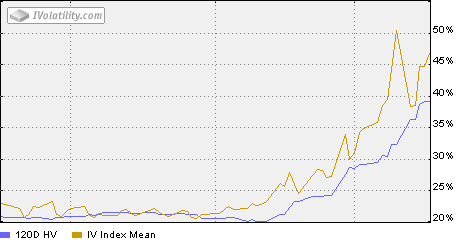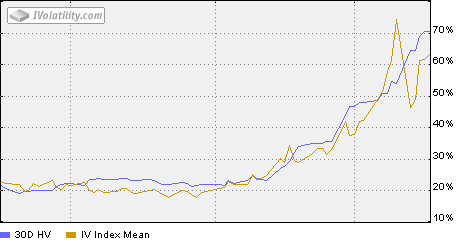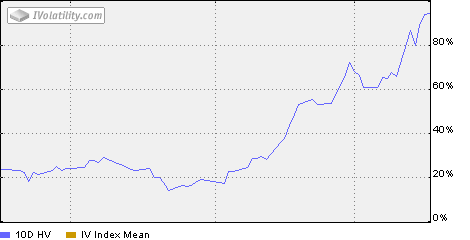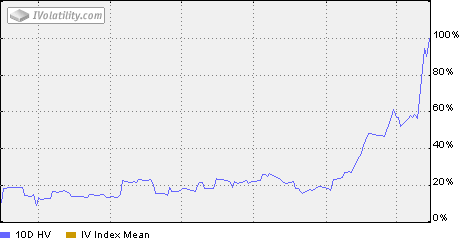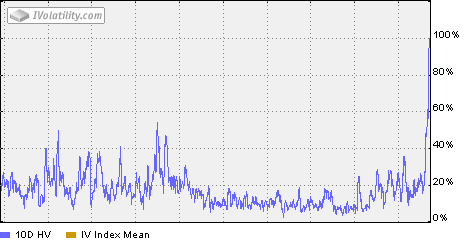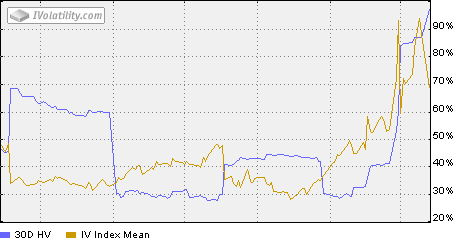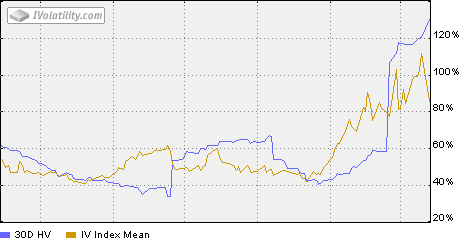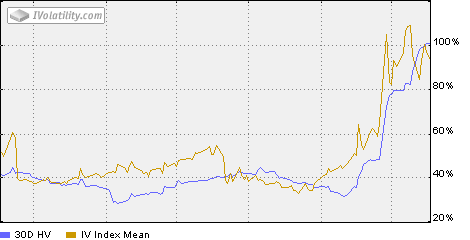 Now that the bear market is officially behind us, time to focus on earnings reactions again. And tonight, it’s the always interesting Apple.
Now that the bear market is officially behind us, time to focus on earnings reactions again. And tonight, it’s the always interesting Apple.
It’s either tricky or pointless in this environment to try to hazzard a guess as to what the market expects for an earnings reaction. The old earnings spikes took AAPL options to about a 60 volatility ahead of the number. Now it’s in the mid 90’s, so it would need a gigantic options crush just to get to the old highs.
Market volatility has declined about 25-30% off the peak (in about a day). So if AAPL does the same thing, that puts it in the low 70’s. So for what’s it’s worth, the options expect a 10% move as best I can tell.
Sold some OTM puts here as a “starter” position after a long 3 hours or so with no AAPL exposure (probably equaling the longest I’ve gone without something in AAPL all year,lol).
Comments »
